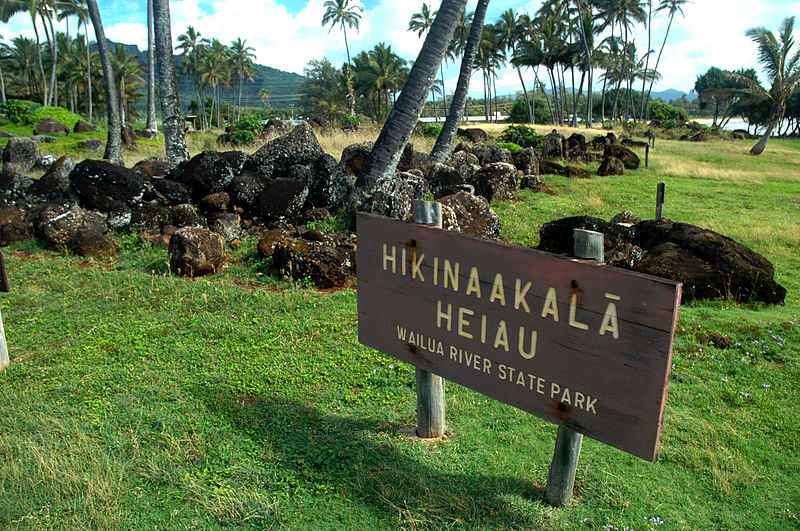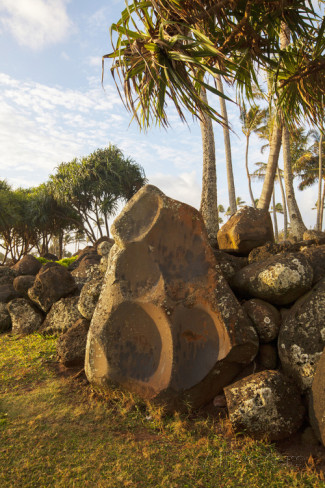At the north end of Lydgate Beach Park next to the river’s mouth is a heiau erected in the 14th century. The original structure, called Hikina-a-ka-la or “The Rising of the Sun,” rose like a mighty fortress, measuring 80 feet wide and nearly 400 feet long, with walls six feet high and over eight feet thick. Each day at dawn, the sun’s first rays broke through the sea’s salt spray and warmed the stacked stones. Kahuna or priests would greet the rising sun with chants and prayers. They placed wooden statues or ki’i along the river wall to keep watch and sway with the shifting tides.
Today, all that remains are foundation stones amidst a grove of coconut trees. Remember that this heiau is still a sacred place. People often leave offerings wrapped in ti leaves. May these offerings and this sacred place continue to offer healing for all.


 RSS Feed
RSS Feed